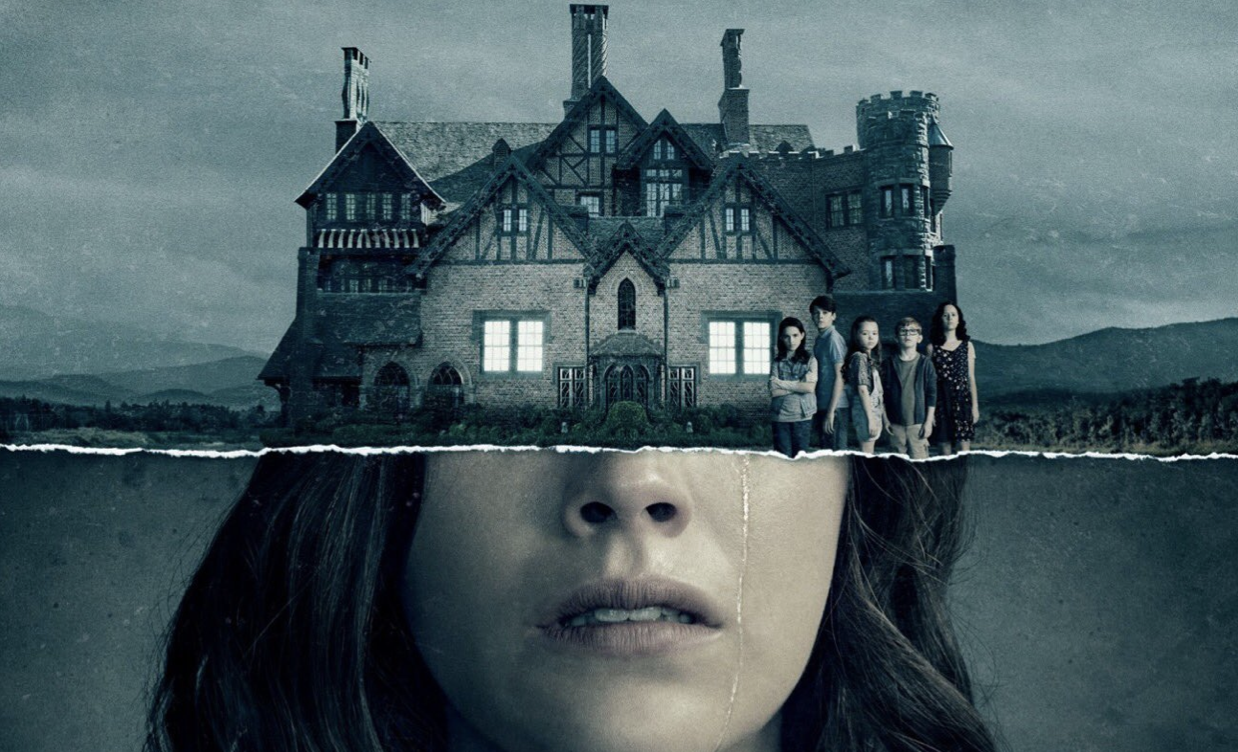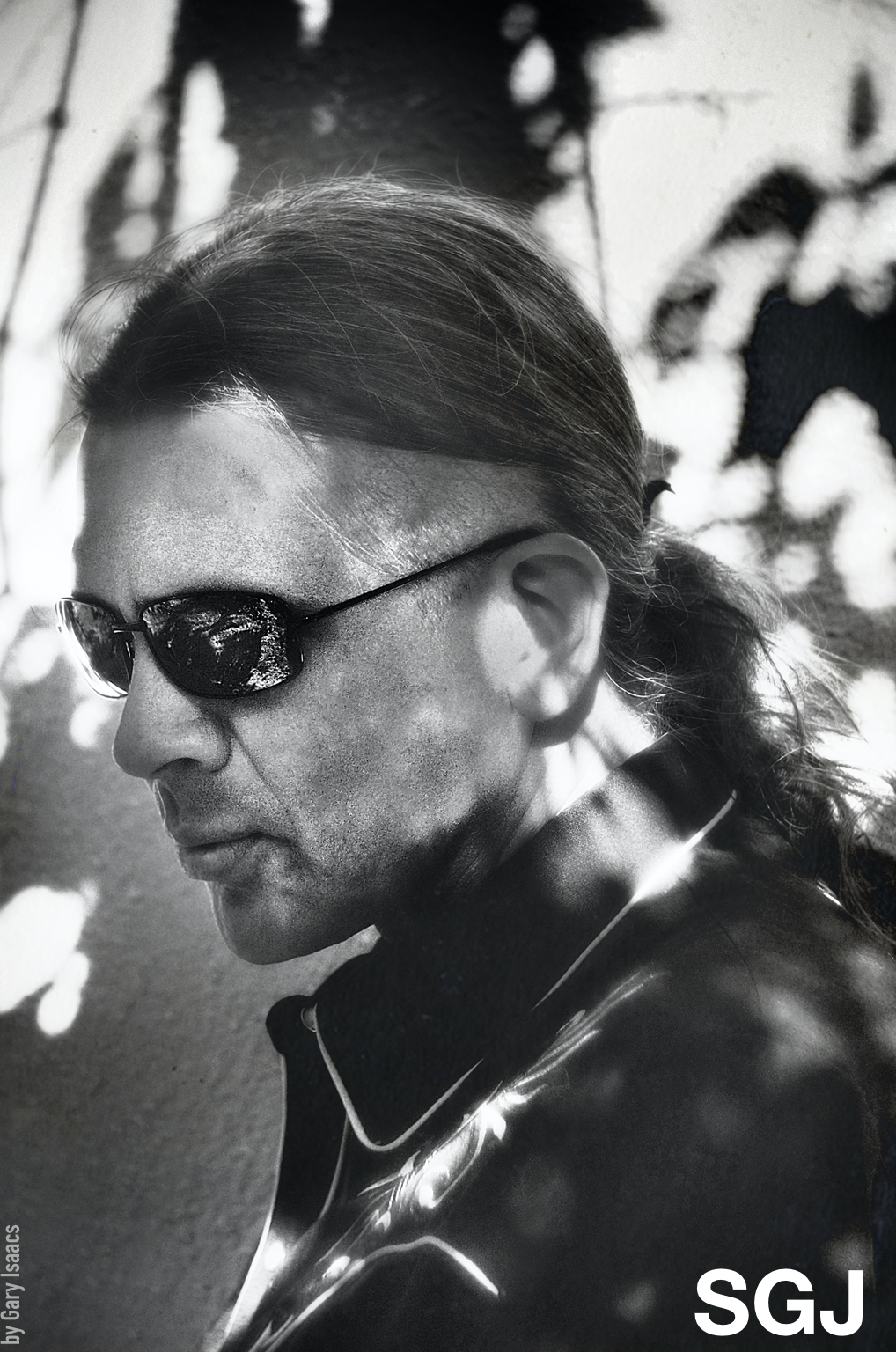Mike Flanagan’s Netflix series, I mean, not Shirley Jackson’s 1959 novel*—though? I do kind of wonder if a whole generation will find a re-issue of The Haunting of Hill House, maybe even with a cover from this television series, and consider it this weird old-timey novelization that doesn’t have Theo being a sister, that puts Hugh Crain way in the past instead of at the head of the current family, all that. I mean, the rain of stones will remain, the novel’s opening will be obviously cribbed from the voice-over, and that spiral staircase is way too iconic to not persist through every iteration of this story, but . . . it’d be fun to talk to that bold reader, I bet.
As for what I want to talk about, though, it’s haunted houses.
At which point, if you haven’t seen the series yet and don’t want spoilers, now‘s the time to pull the cord
—SGJ
Just . . . I think it was last semester, I was fortunate enough to teach a graduate seminar on the haunted house. Smart, curious, capable people to read all these books with? And I got paid for it, too:
- The Haunting of Hill House
- Hell House
- Burnt Offerings
- The Amityville Horror
- The House Next Door
- The Shining
- Lunar Park
- Wylding Hall
Seriously, it doesn’t get much better than that, does it? I mean, yeah, Amityville and Hell House are a slog and a drain both, but you can’t investigate the haunted house without at least brushing up against them. And they’re both so by the numbers—really, we found, ALL of the haunted house novels were by the numbers, even Lunar Park, which wants you to think it could care less about rules or conventions. Each time out you’ve got:
- The crew, who’s there either for science or financial gain (very rarely, it’s just bad luck they’ve stumbled into this particular pitcher plant)
- The house, isolating and gaslighting one member of that crew (the “Eleanor“), mining his or her past to use against them, and apparently responding to the actions of the crew (which proves it’s ‘alive’)
- A scientist type, who insists on applying reason to all these strange goings-on, and completely dismissing the supernatural
- A caretaker, who’s learned to co-exist with this monster of a house
- A medium, who shows up about 80% through or so, and of course never actually saves anything or anyone, usually just ends up dropping some exposition
- A hub—a room or spot where all the badness is localized, where it finds a focus, where the house’s strength is the most pure
- Various ghosts and/or spooky stuff
- A tentpole about halfway through: a plot development that changes everything.
And, as for that house, it A) always wins, and B) gets a lot less interesting if we ever find out its origin story. It’s what King calls a “Bad Place,” and it can trot out ghosts, it can change its own floorpan . . . it can do all kinds of fun stuff.
As for my favorite from that list . . . Lunar Park. Though I do dig The Shining, have read it some six or seven times now, I guess (I’ve even stayed in Room 217), and, really, The Shining is probably better to learn the haunted house from, as it rings all those bells (that list above) so, so well. As does Shirley Jackon’s novel, which of course King was drawing upon and paying homage to (for more homage, check how Carrie opens with a hail of stones . . .). But it’s weird to say that about The Haunting of Hill house, since, really, it wasn’t following anything so much as it was laying it all out for everyone else to use as guide, as model, as template. Granted, it was Jackson kind of poking fun at the gothic revival kind of going on at the time—haunted houses are often about that Victorian “return of the repressed,” yes—but it’s also legitimately just plain old scary, for its own time and for ours. Which Mike Flanagan really got.
Anyway, to line his series up with the above, we’ve of course got:
- The family as the crew, of course
- Hill House as the house that A) has no origin story, and B) is reactive, ‘alive’
- The Dudleys as the caretakers
- Olivia Crain as the Eleanor (never mind that name goes to her daughter Nell . . .) the house isolates and gaslights
- Hugh Crain as the scientist (and then Steven, which, really, is a pretty good name for a protag)
- The Red Room as hub
- Episode 6’s wonderful craziness as 50% through tentpole
- Ghosts as, um, ghosts, around every corner, even coming over the back seat
- And, finally, and surprisingly since she’s dead, Nell being the medium
Which, Nell may take some explaining. The medium always shows up in what feels like the nick of time to use her or his powers to beat back the darkness. Think of that ‘de-ghoster’ or whatever it was in Hell House, that’s supposed to cleanse the place. Dick Hallorann in The Shining, there to save the day. In the novel The Haunting of Hill House, it’s Hugh Crain’s wife, who actually is a medium. In this Netflix series, it’s Nell, using her ‘ghosty’ powers to ‘wake’ her siblings from the dreams the house is fooling them with.
Which?
The medium this time, she’s kind of successful, isn’t she? Which is so rare for this subgenre, as it then leads to that other super-rare thing: the house DOESN’T win. And, I mean, Mike Flanagan, the dude knows his horror AND he knows Jackson’s novel, so . . . why, right? Why give an up-ending instead of the usual ‘everybody dies and gets digested for the next thousand years’-haunted house ending? That’s what I’m really here to talk about.
My suspicions:
- In the original, the novel, this crew comes to Hill House for money, for ‘science,’ for fame, which is to say they DESERVE for Hill House to chew them up. In that closed cycle of justice I’m always talking about, they’re asking for it. And it’s not only Eleanor who pays that price. Dr. Montague’s career is effectively ‘killed’ as well, here. In Mike Flanagan’s version, though, where the Crain KIDS are the main targets/victims of all this haunting stuff . . . they’re just kind of randomly there. Their parents are trying to flip this house, sure—base financial motivations come back to bite you every time in this genre—but the kids, it’s not like they chose these parents over some other parents. They’re just being dragged along, are trying to make the best of it. So, if at least some of them don’t make it through to the light at the end of this long dark tunnel, we’re going to fell kind of cheated, I think. They ‘deserve’ a happy ending, as they never asked for any other kind.
- This isn’t a feature, this isn’t a one-and-done, this is a series, and we’ve invested our intellect and our emotions in it in a different, more involved way. I mean, yeah, I’d have been down with an ending where no one gets out alive here, of course—not talking the movie version of The Mist grim, but sure, somewhere in that direction—but at the same time, ten episodes need to A) pay out in some good way, and B) give us some redemption, please. Even just a little. Really? In a show this grim and startling and dark, the only actual ‘surprise’ ending, I think, IS to have reconciliation and ‘futures’ and all that. So, yeah, if you read my Halloween 2018 write-up, you know I was looking for Laurie’s daughter not to make it through. Not so much here. Here, I’m satisfied with the deaths we’ve got. I mean, yeah, for horror survivors these leftover siblings are pretty well-adjusted, aren’t shattered and traumatized and shivering in a corner. But, they surely will be, as soon as the camera pans away. And that’s enough for me.
So, yeah, this was some good watching, some good storytelling, some fine and spooky television. How I knew it was spooky? Usually I take one of my dogs out for a long walk about ten or eleven at night. The week I was watching this with my wife and daughter, I started walking her in the daytime, and I also found myself getting really, um, ‘strategic’ about the order in which I turned the lights off at night. But there was still some running and diving at the end of that process, of course.
It’s kind of why I’m into all this horror, I guess: that run, that dive, it feels so, so good. So wrong and terrible in the moment, so excellent just half a breath later.
Bring me more like this, please.

* just to place “1959”: four years after Lolita, two after On the Road, two years before Catch-22, three before V . . .

 is the NYT bestselling author of 30 or so books, +350 stories, some comic books, and all this stuff here. He lives in Boulder, Colorado, and has a few broken-down old trucks, one PhD, and way too many boots. More
is the NYT bestselling author of 30 or so books, +350 stories, some comic books, and all this stuff here. He lives in Boulder, Colorado, and has a few broken-down old trucks, one PhD, and way too many boots. More